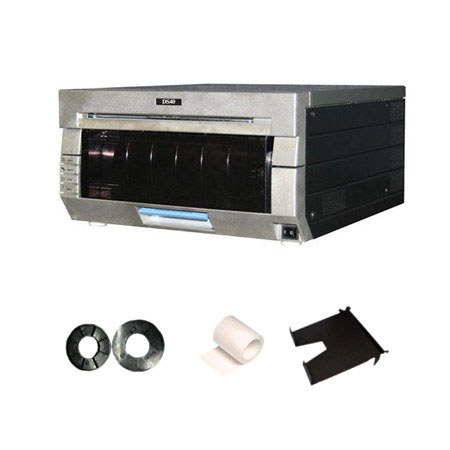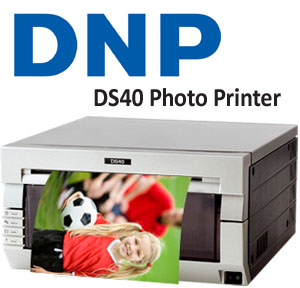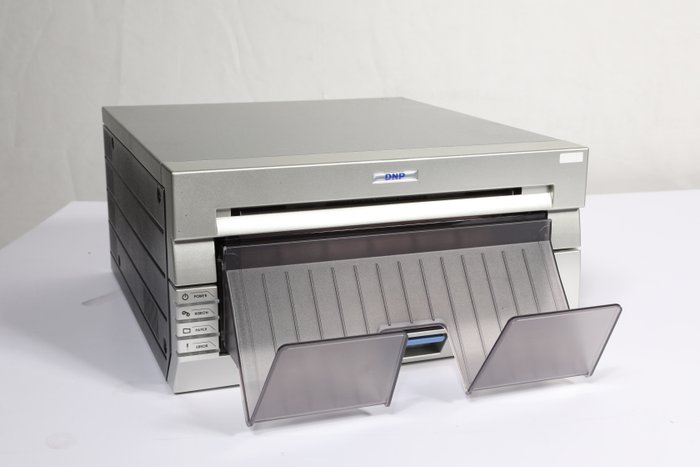

Seems that everytime I needed to print with my ink jet there were always issues with the cartridges, etc.
#Dnp ds40 professional photo printer vs pro
I am not a pro photographer and don't print on regular basis. One notable advantage is that it does not require regular use (nothing to dry up or clog). The DS80 has solved all of those problems and then some. I formerly used ink jets (both Epson and HP) and became frustrated with clogged nozzles, cartridge costs, etc. It has worked extremely well and I am very happy I made the investment (about $1700). I purchased and have been using a DNP DS80 for about 10 months and have printed over 500 8x10 prints with it. But the 5x7 onwards pick up revenue and they can quickly recoup costs. (They don't make money off the 4圆 since it is a competitive market. If you look around at local stores that print photos (CVS, Walgreens, Walmart, etc) then you will notice their 4圆 prices are almost identical to this.
#Dnp ds40 professional photo printer vs plus
While this can be viewed as both a plus or minus, it does make calculation of print cost very easy. Dyesubs also have a fixed cost per print, since a picture unit of ribbon (yellow, magenta, cyan, laminate) is used regardless of the image content. There are no nozzles to clog, resulting in waste of ink while cleaning the print heads. The laminate layer makes dyesub prints even more water resistant than conventional silver halide prints.Ģ) Speed- While current inkjet printers have made significant speed increases and some inkjets match dyesub speeds, historically, dyesubs have held an advantage in throughput, which made them the printer of choice for event (on-site) printing.ģ) Robustness- Dyesub printers are generally pretty robust. It also means that the prints come out dry and ready to use.

This laminate covers the dye layers and adds significantly to the image permanence. Here are some of the positives:ġ) Laminate- All current dyesub printers print a fourth, laminate layer. I use Kodak dyesubs for all my photo printing. You're correct, I only listed the negative issues for dyesub printers.

clients hate it when their photos bleed and smudge. This whole part was me saying multi-function photo printers are NOT the way to go because you have to keep buying ink at ridiculous prices!ĭye sub will not bleed or smudge. I think dpreview needs to enable a third edit ability. they have come a long way in the last five years. it's basically a last film overlay on the photos. but clients won't be able to notice a difference. PS - the matted technology is as Bob said. Buy a dye sub, then contract out all your larger than 8x12 photos to a local printing company that you trust. I hate it.Īlso when you run out of Yellow, you are basically dead in the water until you get a new yellow. The multi-function printers seem to be cheap (usually) because they nickel and dime you for the ink. you will have to keep buying ink cartridges to print these amounts. The media and rolls will print (depending on printers - sony updr200 used for my example)Ħx8 media - 700 prints per box (350 per roll)ĥx7 media - 800 prints per box (400 per roll)Ĥ圆 media - 1,400 prints per box (700 per roll)Ĭompared to ANY printer dpreview is listing on their site now. Cleaning ribbons come with all of these printers and usually a cleaning sheet is given with each box of media. They will fall on the roller and will come off quickly during printing 90% of the time. The dust specs are usually there for a max of three prints. While Bob is correct, I think he is focusing on the negatives. Because dyesub printers are moving the paper back & forth while printing the 4 layers (yellow, magenta, cyan, laminate), the paper & ribbon tend to build up a static charge which attracts any dust that may be nearby. A spec of dust either on the ribbon or paper will give a white or colored dot on the image. While some dyesubs claim to offer a matte finish, it is either a different laminate layer (less glossy), or a "pattern" that is "embossed" into the laminate layer after printing.ģ) Dust- While dust is a problem with all types of printers, it seems to be somewhat more of a problem with dyesub printers. The disadvantages are:ġ) Color Gamut- Dyesub printers don't have a large a color gamut as the newer 6-color (or more) inkjets.Ģ) Paper Choices- Dyesub printers have to print on glossy paper (require intimate contact between the ribbon & paper). Having been involved with Kodak's dyesub printers for nearly 20 years before I retired, there are three disadvantages of dyesub compared to inkjet (although there are some advantages as well).


 0 kommentar(er)
0 kommentar(er)
